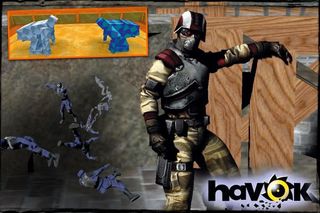Nov 9, 2007
You've got to admire those flippy-floppy folk known as ragdolls. When we're not shooting them in the skull, we're piling them on top of each other like prisoners in Abu Ghraib, or throwing them down staircases in exquisite slo-mo. Isn't it about time we gave these living dolls their dues?
Dr. Steve Collins, co-founder of Havok (the physicsgeeks whose engines have powered countless games, from Company of Heroes to BioShock), reckons so. "If you want a convincing portrayal of a character that interacts realistically with other characters or with the world around them, then ragdoll technology is a critical component," says Collins, who left Havok in 2005 to teach game technology at Trinity College, Dublin.

And yet, like Britney Spears, there's something not quite right about ragdolls. More often than not, the instant a game character 'dies,' it transforms into a flaccid amoeba, flopping about on the floor and folding into origami shapes without even a nod to human anatomy.
Then again, even fully animated characters in games are fraught with problems, as Dave Gargan, principal engineer at Havok, points out: "Game characters continue to run as they face walls. They don't have any subtlety. They don't bang their shoulders on doorposts and they don't place their hand on a wall to support themselves as they peek around corners."
